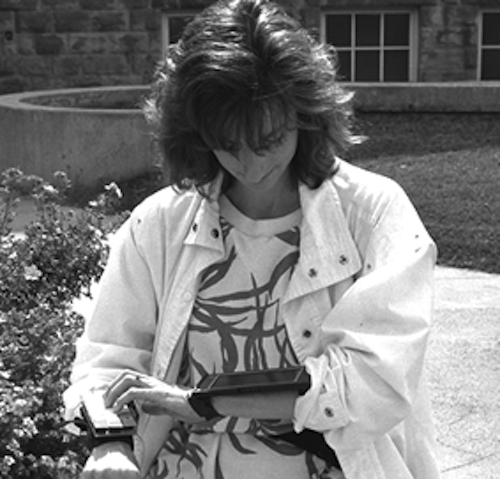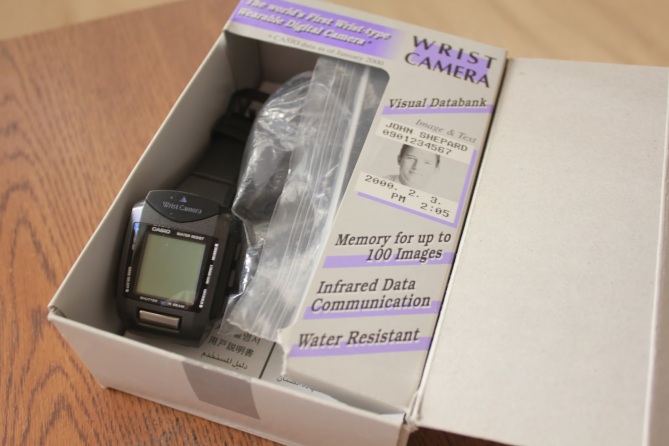Wearable technology is undoubtedly one of the latest trends to proliferate our digital world. While wearables might seem like an innovation entirely out of the 21st century, humans have been tinkering with these gizmos and gadgets long before the days of Pebble, Jawbone, Fitbit and Google Glass.
In fact, the definition of “wearable computers” can date all the way back to the 16th century when humans first starting wearing time-keeping devices. However, due to the differing definitions of both “wearable” and “computer,” there remains varying beliefs as to who devised the first computer with which we adorned our bodies. For some, the first wearable (an abacus ring) arrived on the scene early as between 1368 and 1644 during Qing Dynasty era, while others believe it was either the first wristwatch by Breguet for the Queen of Naples in 1810, or the covert timing devices hidden in shoes to cheat the game of roulette by Thorp and Shannon in the 1960s.
The 1920s saw the debut of digital mechanical watches such as the Cortebert Mechanical Digital, the ancestors of today’s high-tech materials and innovative designs. Then, nearly a half of a century later in 1972, Hamilton introduced the world’s first fully electronic wristwatch with a digital display, the Pulsar P1 Limited Edition Watch. By the end of 1970s, the price of the average digital watch dropped drastically and come 1980, these became nothing more than a mere novelty. During this time, however, consumers were introduced to the revolutionary Sony Walkman, which remains arguably one of the first real success stories in the wearable world with over 385 million units sold worldwide.
Throughout the evolution of what many would dub “archaic” wearables, the world came to love (and sometimes strongly dislike) these devices — many ahead of their time, while some real duds. Fortunately, we still remember them, and today, we pay homage to some of wearable technology’s predecessors… before the days of versatile microcontrollers.
Abacus Ring, 1600s
Developed in the Qing Dynasty era (1644-1911), the ring features a 1.2cm x 0.7cm abacus that sits on the finger. While the ring may not be able to make phone calls, it does prove that wearable tech may not be a modern-day concept as many would think.
Breguet Wrist Watch, 1810
Breguet created the first wrist watch for the Queen of Naples, Caroline Murat.
Protona Minifon P55 Recorder Wristwatch, 1955
This wristwatch got a little closer to true spy action, except for that conspicuous carrying case.
Atsuko Tanaka Electric Dress, 1956
The center of attention at exhibitions, this burqa-like costume consisted of electrical wires and colored lightbulbs. Inspired by a pharmaceutical advertisement illuminated by neon lights, the bulky garment set out to express the body’s circuitry, while acting like a costume.
ARPA Sword of Damocles, 1968
Created by computer scientist Ivan Sutherland, the Sword of Damocles was the first pioneering example of a virtual and augmented reality head-mounted display system.
Keith Taft’s George Blackjack Shoe Computer, 1972
Weighing fifteen pounds and the size of three large textbooks, the world’s first microcomputer-powered blackjack cheating device was fitted around the waist, surrounded by batteries and controlled by switches attached to big toes inside custom made shoes.
Hamilton Pulsar P1 Limited Edition, 1972
The very first electronic digital watch to reach the market made its in April 1972 for $2,100 — about $11,400 today.
Hamilton Pulsar Calculator Watch, 1976
Only a few years after the launch of LED wristwatches, several manufacturers like Hamilton showed off prototypes for models containing fully-functional calculators.
Hewlett-Packard HP-01, 1977
While this wrist instrument may have resemble an ordinary digital watch, it was in fact much smarter than its fellow pocket calculators. The HP device performed more than three dozen functions to manipulate and interrelate time, calendar and numeric data. With six interactive functions (time, alarm, timer/stopwatch, date/calendar, calculator and memory), the HP-01 had 28 tiny keys that the user operated with a stylus built into the bracelet.
Texas Instruments Star Wars Watch, 1977
TI revolutionized the digital wristwatch industry with the introduction of the first under-$20 LED watch in 1976. Soon, the company produced licensed LED watches that tied-in with the release of movies like Star Wars the following year.
Sony Walkman, 1979
Kids, way before the days of your MP3, Sony debuted its iconic portable cassette tape players on July 1, 1979 for $150.
Casio Game-10, 1980
Who remembers playing mini-versions of Legend of Zelda or Super Mario on their wrists?
Steve Mann’s WearComp, 1981
While still in high school, the revolutionary Maker designed a backpack-mounted computer to control photographic equipment. Mann felt that humans that computers and computing environments should be available anywhere to a person, not just at a specifically designed computer terminal.
Seiko TV Watch, 1982
Now this watch did something rather innovative for 1982 — it allowed wearers to view live TV on a tiny LCD screen embedded into the watch face.
Puma RS Computer Shoe Pedometers, 1986
These Puma running shoes were affixed with pedometer computers that could be reset and would count up time and distance that could be then downloaded to the game port on the Apple II.
Reflection Technology Private Eye, 1989
The Private Eye head-mounted display scanned a vertical array of LEDs across the visual field using a vibrating mirror.
First Wrist Computer, 1994
Designed by Edgar Matias and Mike Ruicci of the University of Toronto, this “wrist computer” presented an alternative approach to the emerging HUD + chord keyboard wearable. The system was built from a modified HP 95LX palmtop computer and a half-QWERTY keyboard. With the keyboard and display modules strapped to the operator’s forearms, text could be entered by bringing the the wrists together and typing.
First Linux Wristwatch, 1998
The “Father of Wearable Computing” Steve Mann invented, designed and built the world’s first Linux wristwatch.
The Trekker, 1998
In terms of size, this device is a slight improvement of Steve Mann’s pioneering work, but still lacked the appropriate geek chicness. Produced by Rockwell, the Trekker was a rugged wearable computer based on a 120 MHz Pentium with built-in DSP support for speech interface and a monocular head-worn display.
Digital Eye Glass EyeTap Augmediated Reality Goggles, 1998
A step closer to today’s smart glasses…
MicroOptical TASK-9, 2000
Even closer… Founded in 1995 by Mark Spitzer, the company produced several patented designs which were bought by Google after the company closed in 2010. One such design was the TASK-9, a wearable computer that is attachable to a set of glasses.
WatchPad, 2000
IBM first prototyped a watch running Linux in 2000, and quickly evolved into the WatchPad, made in collaboration with Japan’s Citizen Watch Company.
Casio Wrist Camera, 2002
The Casio Wrist Camera was the first wristwatch with an integrated digital camera. Sure, it only captured 120-by-120-pixel photos in grayscale, but the fact that Casio crammed a working camera into a watch turned many heads.
Xybernaut Poma, 2002
The Xybernaut Poma Wearable PC was another foray into the head-mounted display market that launched after Steve Mann’s gadgets and way before Google Glass. The wearable comprised of a 309g Windows CE device, running on the Hitachi 128MHz Risc processor with 32MB of RAM.
Fossil Wrist PDA, 2003
Essentially be a watch running a read-only version of the Palm OS…
Whatever the future may hold, rest assured we’ll continue to power a number of these next-gen devices — from the Atmel | SMART SAM4S Cortex-M4 being embedded in smartwatches to ATmega32U4 MCUs used to design some wild FLORA-based creations. Interested in learning more? Discover how the computers that we wear will help you work, play and just about everything else in our latest white paper here.


























Pingback: What We Are Reading | Quantified SelfQuantified Self
Pingback: Wearable History | Saper Tech